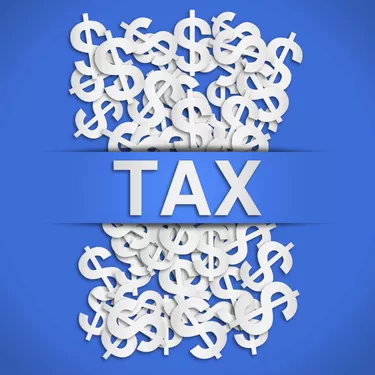
As a general rule, tax cuts are good for the economy. When fewer dollars go to federal or local tax authorities, consumers have more money to spend. This spending stimulates economic activity, which can, in turn, create more jobs and put still more money into the pockets of more consumers. However, the bigger picture can be a bit more complex depending on the state of the economy and the motivations of consumers at the time of the tax cuts.
Aggregate Demand
Video of the Day
Aggregate demand represents the total dollar amount of goods and services that all players in the economy purchase and consume. This includes purchases by individuals and households, by corporations and non-profit entities, and all branches of local and federal government. Aggregate demand is a function of how much money these players in the economy have to spend. This money is, in turn, a function of how much cash these entities and individuals take in, and to what extent they are willing and able to supplement this cash income by way of borrowing or reduce it by saving.
Video of the Day
Aggregate Supply
Aggregate supply is the other side of the coin. It represents the total dollar amount of the goods and services suppliers are willing and able to provide, given the consuming entities' willingness to purchase. When demand for any good or service increases, its price also goes up. This increase in price prompts new manufacturers to enter a business sector and/or existing suppliers to ramp up capacity to supply more. The net result is an increase in total quantity supplied. In a healthy economy, aggregate demand and aggregate supply are equal as demands of consumers are met by suppliers.
Effect of Tax Cuts
As a general rule, tax cuts increase aggregate demand, since less money paid to the tax authority means more money in the pockets of consumers. In more technical terms, tax cuts result in higher disposable income. In most instances consumers spend rather than save this additional disposable income. This spending results in greater supply, which means suppliers need to hire more employees or pay overtime and higher wages to existing ones to motivate them to produce more. This in turn creates new jobs and higher wages and yet higher total disposable income in the economy, further increasing aggregate demand. This secondary impact is referred to as the multiplier effect.
The Caveat
As is always the case in economic analysis, events can follow various paths in real life. For one, heavily indebted consumers can choose to save, rather than spend, most of the added income from tax cuts. This is particularly likely if interest rates are high and the interest expense on such loans as mortgages and credits cards is burdensome. In such situations, the total increase in aggregate demand can be far less than expected. In addition, less tax income for the government could mean heavy curbing of government demand for goods and services. Even if consumers spend more, this can be partially offset by fewer dollars spent by governments.